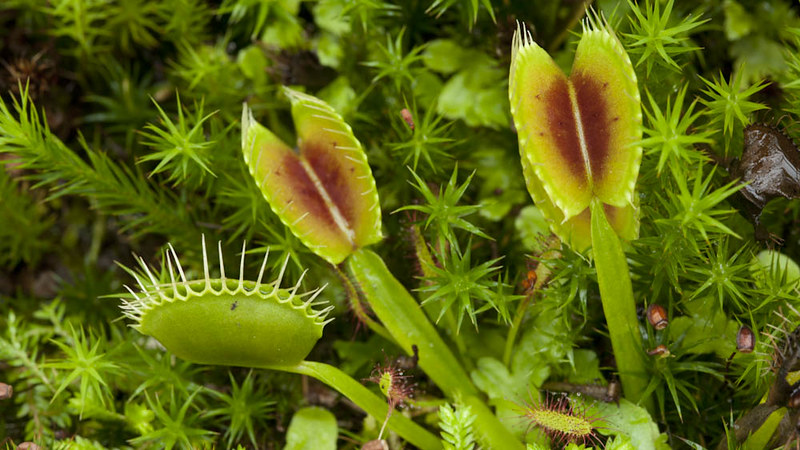The world is full of insects, representing more than half of known life on Earth. It’s no wonder, then, that many of them find their way into our homes! While regular pest control is an important part of keeping these bugs at bay, there are a fair few natural pest controllers in the wild, like the carnivorous plant. And you can actually grow them at home to help control certain pests.
 Source: Flickr
Source: FlickrCarnivorous plants come in all shapes and sizes and, unlike other house plants, derive nutrients from eating insects instead of performing photosynthesis. Let’s take a look at four cool carnivorous plants.
1. Dionaea muscipula
More commonly known as the Venus flytrap, Dionaea muscipula is one of the most popular carnivorous plants. A relatively small plant, the Venus flytrap has four to seven leaves growing from each stem. The leaves comprise one flat petal, capable of photosynthesis, and a pair of lobes that look more like a monster’s mouth.
When an unlucky insect stimulates the sensory hairs on these lobes, the mouth snaps shut. The “mouth” snaps shut in a tenth of a second, but the flytrap is so advanced that it can distinguish between living and non-living stimuli. Cilia—which look a lot like teeth—mesh together, forming a cage to prevent prey from escaping. The lobes then fuse together, creating a makeshift stomach through which the flytrap can digest and absorb its lunch.
2. Sarracenia
The Sarracenia, or North American pitcher plant, is indigenous to the Great Lakes, the southeast of Canada, the eastern seaboard, and Texas. Unlike the Venus flytrap, the Sarracenia operates via a pitfall trap. Its leaves grow into a funnel shape. The smell, color, and sweet secretions at the tip of this funnel attract insects. The nectar-like substance is laced with a narcotic, while the surface of the funnel is slippery. Both of these features cause the insect to fall inside the funnel, wherein a series of digestive enzymes break the insect down into a juicy pulp for easy absorption.
3. Genlisea
There are 21 corkscrew plant species in the world, most of which are spread through Africa and South America. These herbs have two types of leaves: one set above ground to perform photosynthesis and another set below ground to act as roots and digest microscopic organisms. The latter set of leaves form hollow tubes in the ground in a corkscrew shape. Thanks to this unique shape and the flow of water, microbes can enter the tubes but they can’t make their way out, forcing them to get trapped, digested, and absorbed.
4. Drosera
Drosera, or sundews, feature at least 194 species found all over the world. They are characterized by glandular tentacles that are tipped with sweet, sticky juices, irresistible to insects. When a fly or bee lands on a tentacle, the plant moves more tentacles in its direction, wrapping the insect up. Once the insect is trapped, glands break the insect down into a delicious soup that the plant then slurps up.
If you’re bugged by bugs, you may just want to invest in a carnivorous plant to help take care of them for you.
